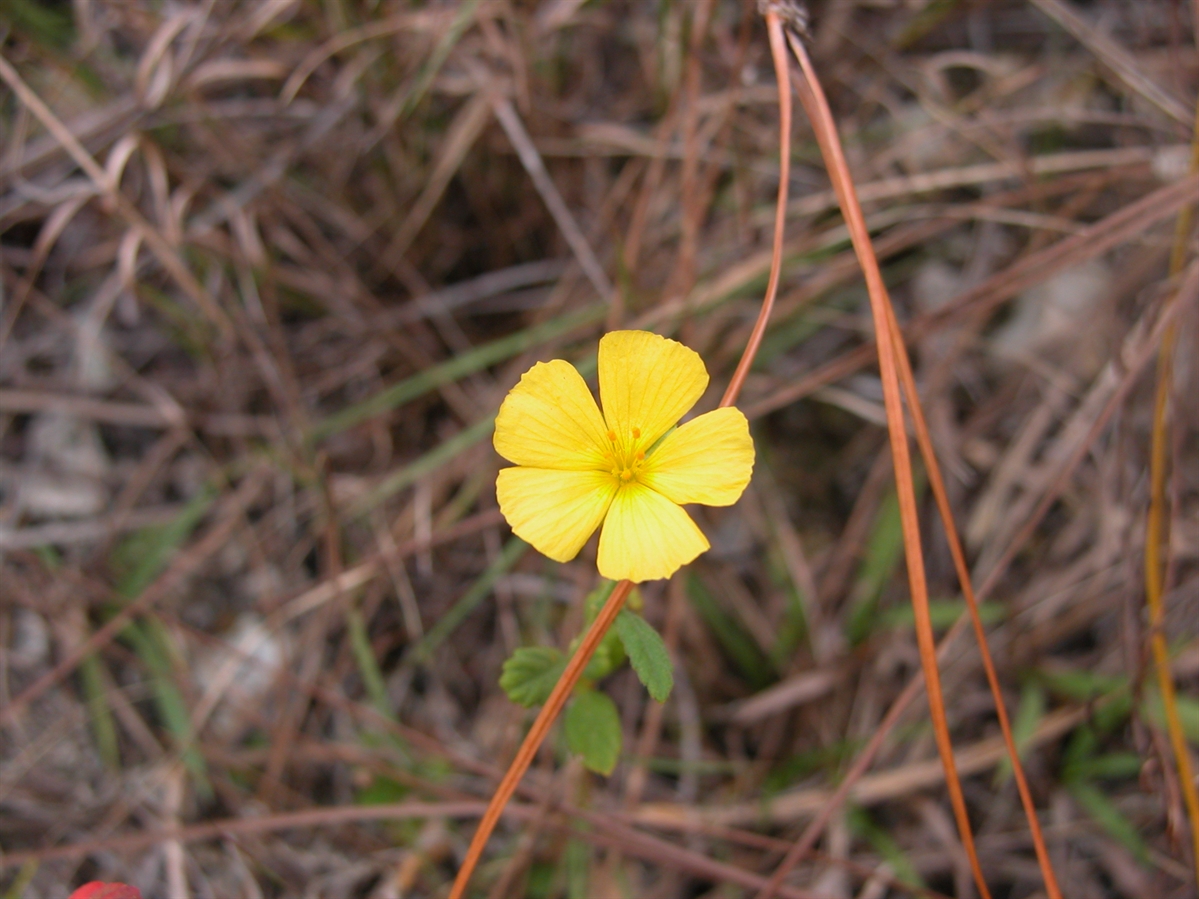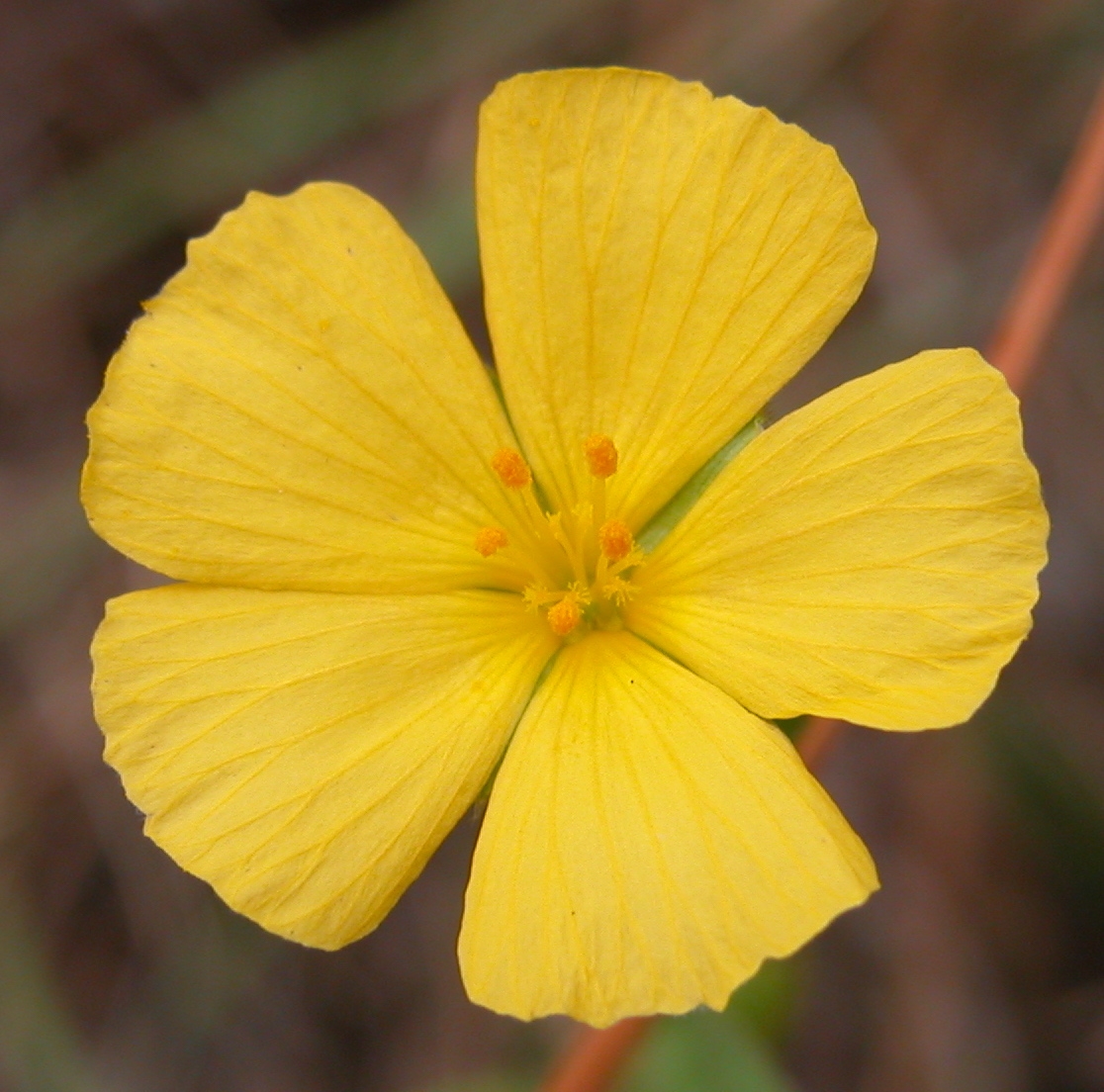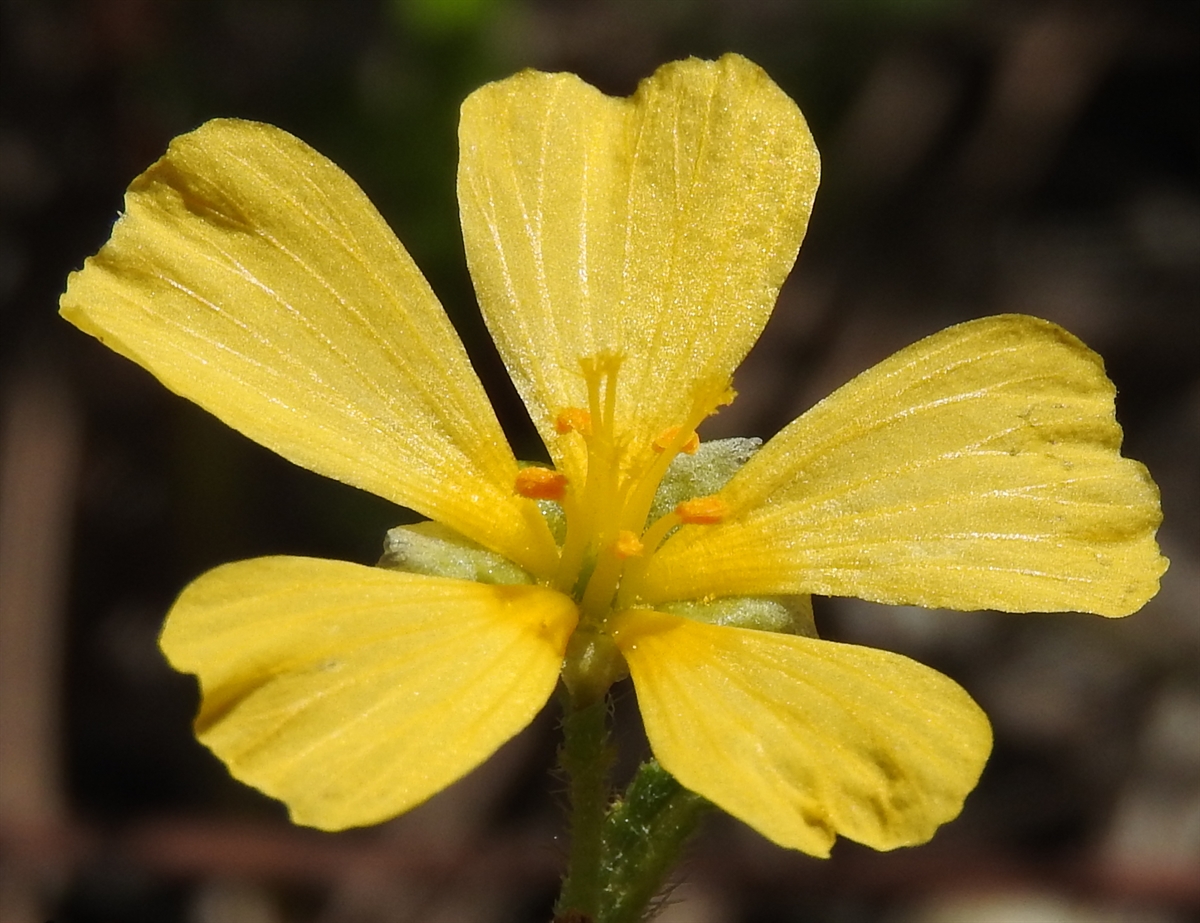Habit: Piriqueta cistoides grows as a perennial herb with a slightly woody base up to 60 cm in height. The entire plant may be glabrous to pubescent (stellate) often with yellow brown trichomes. The leaves are arranged alternately, to 5 cm in length, linear to lanceolate. The leaf has an entire to crenate margin, with an acute leaf apex.
The complete, perfect, actinomorphic flowers are in short terminal and axillary racemes. The calyx has 5 fused, at their base, green sepals. The corolla has 5 unfused bright yellow petals with visible veins. There are 5 unfused stamens. The ovary is superior with a single locule and many seeds. The fruit is a round capsule at maturity.
Habitat: Piriqueta cistoides grows in Human Altered environments (roadsides, houses, abandoned fields), Pine Woodlands, as well as long the edges of Dry Broadleaf Evergreen Formation – Woodlands/Shrublands.
Distribution: Piriqueta cistoides occurs on the northern (pine) islands in the Lucayan Archipelago, Cuba and Hispaniola as well as the southern United States.
Medicinal/Cultural/Economic usage: Piriqueta cistoides is not known to be used medicinally in the Lucayan Archipelago.


